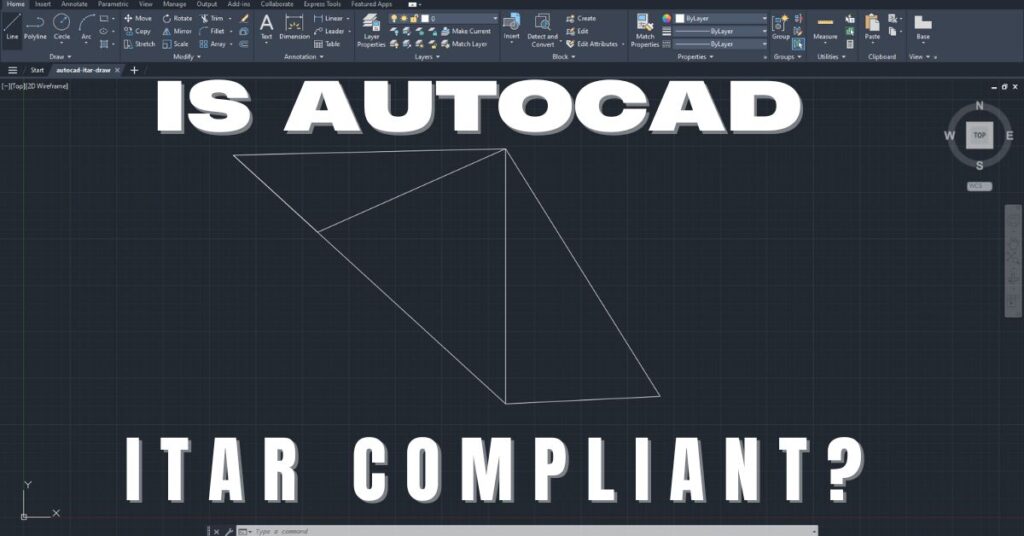How to Prepare For Your CMMC Audit
Preparing for a CMMC (Cybersecurity Maturity Model Certification) audit is crucial for organizations that handle sensitive government information. By demonstrating compliance with the Department of Defense’s cybersecurity requirements, you not only ensure the security of valuable data but also position your organization for potential government contracts. In this article, we will provide a step-by-step guide on how to effectively prepare for your CMMC audit, ensuring a smooth and successful certification process.
Assess Your Current Security Posture
Before diving into the CMMC audit preparation, it’s essential to assess your organization’s current security posture. This assessment will help identify any gaps or vulnerabilities that need to be addressed. Here’s how to proceed:
Identify Controlled Unclassified Information (CUI) Assets
Start by identifying all the assets within your organization that store or process Controlled Unclassified Information (CUI). This includes documents, databases, and systems. By pinpointing these assets, you can focus your efforts on implementing the necessary security controls to protect them effectively.
Conduct a Comprehensive Risk Assessment
Performing a thorough risk assessment is the foundation of any robust cybersecurity program. Identify potential vulnerabilities and assess their potential impact on your CUI assets. This step will guide you in determining the appropriate security controls to mitigate risks effectively.
Implement Necessary Security Controls
Based on the results of your risk assessment, it’s time to implement the necessary security controls to protect your CUI assets. Some essential controls include:
Access Controls
Implement access control mechanisms to ensure that only authorized individuals can access CUI.
Encryption
Employ encryption techniques to secure data both at rest and in transit.
Intrusion Detection Systems
Install and configure intrusion detection systems to monitor network traffic for potential threats.
Develop Incident Response and Recovery Plans
In the event of a security incident, having well-defined incident response and recovery plans is critical. These plans outline the steps to take when an incident occurs, including reporting, investigation, containment, and recovery. Ensure that your plans are comprehensive, regularly tested, and updated to align with emerging threats.
Provide Ongoing Security Training and Awareness
Educating your employees on cybersecurity best practices is vital in maintaining a strong security posture. Conduct regular training programs to raise awareness about potential threats, proper handling of sensitive information, and adherence to security protocols. Encourage a culture of cybersecurity consciousness within your organization.
Continuously Monitor and Audit Security Controls
Continuous monitoring and auditing are essential to proactively detect and address any vulnerabilities or suspicious activities. Regularly review security logs, conduct audits, and perform penetration testing to ensure the effectiveness of your security controls.
Prepare for the CMMC Audit
To successfully undergo the CMMC audit, make sure you are well-prepared. Keep the following steps in mind:
Maintain Documentation and Evidence
Maintain comprehensive documentation and evidence of your compliance efforts. This includes policies, procedures, security control implementation records, training records, and incident response plans. Having organized and up-to-date documentation will help streamline the audit process.
Establish Readiness for Evaluation
Review your organization’s readiness for the audit by conducting internal assessments and mock audits. Identify any areas that need improvement and address them proactively. By aligning your practices with the CMMC requirements, you increase your chances of achieving a favorable audit outcome.
Conclusion
Preparing for your CMMC audit is a critical step in demonstrating your organization’s commitment to cybersecurity and gaining access to government contracts. By following the steps outlined in this guide, you can establish a solid security posture, implement necessary controls, and effectively navigate the audit process. Remember, achieving compliance is an ongoing effort, so continuously monitor, update, and enhance your security practices to stay ahead of emerging threats. Contact Cleared Systems for more information.
Useful Links
- NIST (National Institute of Standards and Technology) – NIST Cybersecurity Framework
- FedRAMP (Federal Risk and Authorization Management Program) – FedRAMP Overview
- CMMC Accreditation Body – CMMC Accreditation Body
- DHS (Department of Homeland Security) – DHS Cybersecurity
- GSA (General Services Administration) – GSA IT Services
- ISC² (International Information System Security Certification Consortium) – ISC² Resources
- SANS Institute – SANS Security Resources
- ISACA (Information Systems Audit and Control Association) – ISACA Cybersecurity
- Center for Internet Security (CIS) – CIS Controls
- OWASP (Open Web Application Security Project) – OWASP Security Resources
- DISA (Defense Information Systems Agency) – DISA Security Resources
- U.S. Army Cyber Command – Army Cyber Command
- U.S. Navy Cyber Warfare Development Group – Navy Cyber Warfare
- U.S. Air Force Cyber Command – Air Force Cyber Command
- U.S. Marine Corps Cyberspace Operations – Marine Corps Cyberspace Operations
Share in Social Media
See More Case Studies

Securing Defense Contracts: A DFARS 252.204-7012 Compliance Case Study
Discover how Cleared Systems helped a Federal Contractor successfully achieve DFARS 252.204-7012 compliance by strengthening its cybersecurity posture, giving it a competitive edge when bidding for DoD Contracts.

What is GCC High? For ITAR & CMMC 2.0
Microsoft 365 Government Community Cloud (GCC) High is a specialized cloud solution tailored for U.S. federal, state, local, tribal, and territorial government organizations, as well as for contractors who hold or process data subject to specific security regulations. In this article, we will explore the features, benefits, and differences between Microsoft 365 GCC High and other Office 365 offerings.

Is AutoCAD ITAR Compliant? A Comprehensive Guide for Defense Manufacturers
Defense contractors and manufacturers working with sensitive military technologies face a critical question when selecting computer-aided design software: Is AutoCAD ITAR compliant? This question becomes

How to Get Help in Windows: Guide to Security and Compliance Support
In today’s digital landscape, ensuring your computer systems are secure and compliant with industry regulations is essential for both businesses and individuals. Windows, as one

Microsoft Copilot for GCC High: Enhancing Security and Compliance
In today’s fast-evolving digital landscape, organizations that handle sensitive data, particularly those in government sectors or defense contractors, face growing pressure to maintain strict security
Partner with Us for Compliance & Protection
We’re happy to answer any questions you may have and help you determine which of our services best fit your needs.
Your benefits:
- Client-oriented
- Security
- Compliance
- Peace of mind
- Efficiency
- Trust
What happens next?
Schedule an initial meeting
Arrange a discovery and assessment call
Tailor a proposal and solution
